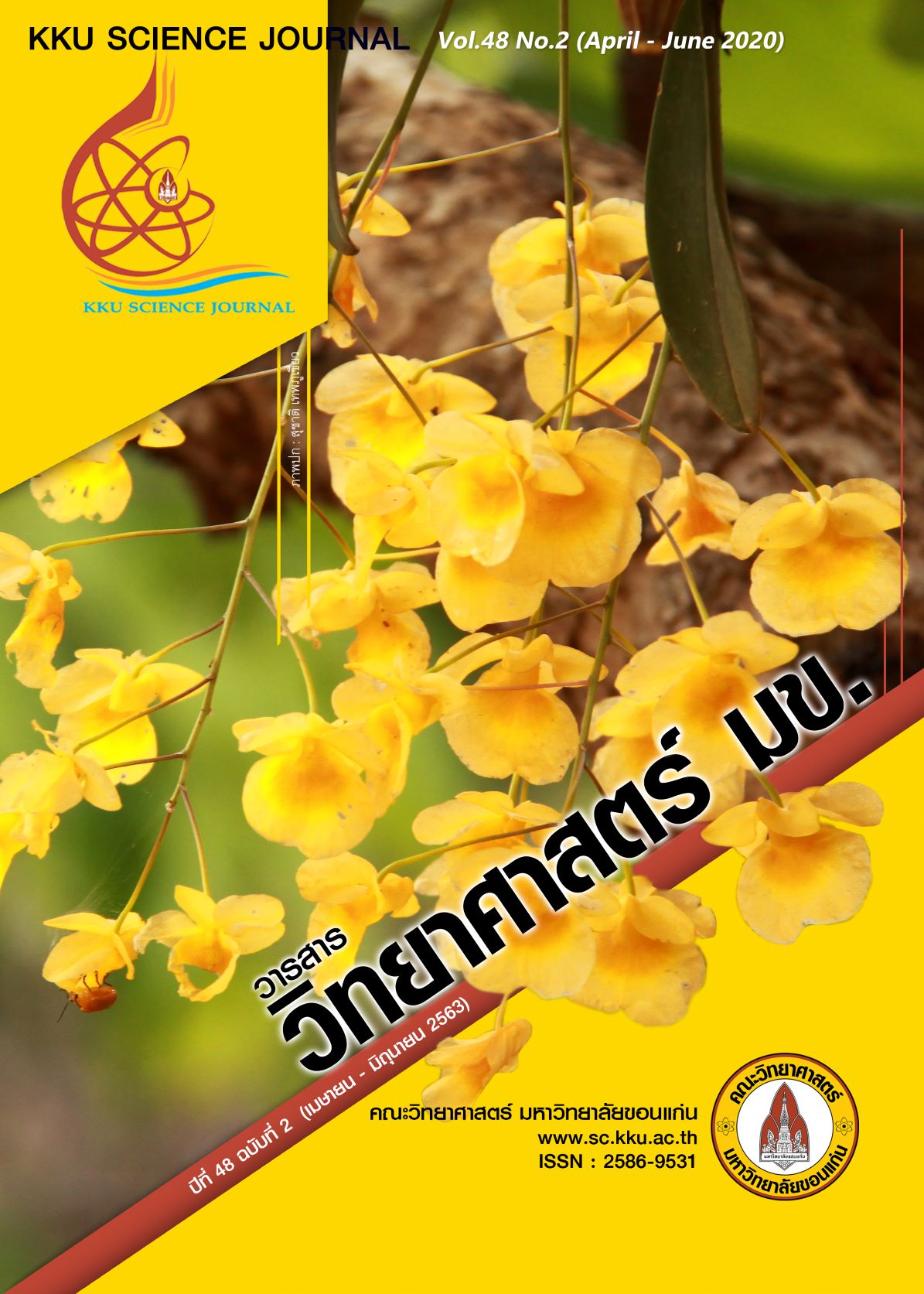Genetic Diversity of Siamese Rosewood (Dalbergia cochinchinensis Pierre) in 5 Plantations of Thailand
Main Article Content
Abstract
The objective of this study was to assess genetic diversity of Dalbergia cochinchinensis in five intensively managed plantations, including Wang Nam Khiao Forestry Research and Student Training Station (WK), Klongtakao Plantation (KK), Tagum Noboru Umeda Plantation (TU), Dong Lan Silvicultural Research Station (DL), and Mu Si Silvicultural Research Station (MS). Leaves of 30 individual trees in each plantation were collected for genetic diversity study using Inter Simple Sequence Repeat (ISSR) markers technique. From total 150 samples, 10 primers were appropriate to yield 76 amplified bands. At species level, the percentage of polymorphic loci (% P), mean expected heterozygosity (He), and the Shannon’s information index of diversity (I) were high (81.58 %, 0.2904, and 0.4336, respectively). Among the investigated of five populations, population from WK contained the highest genetic diversity, followed by population from DL, KK, MS and TU. Unweighted pair group method of arithmetic average (UPGMA) cluster analysis divided the populations into two main groups, which TU was separated from the other 4 plantations (WK, KK, DL and MS). The result of this study confirmed that D. cochinchinensis plantation is one of a good practices to maintain a high level of genetic diversity. Therefore, germplasm collection as seed or scion from various sources (ex situ gene conservation) should be the urgent tasks of the related organizations in order to maintain a high level in genetic diversity.
Article Details

This work is licensed under a Creative Commons Attribution-NonCommercial-NoDerivatives 4.0 International License.


